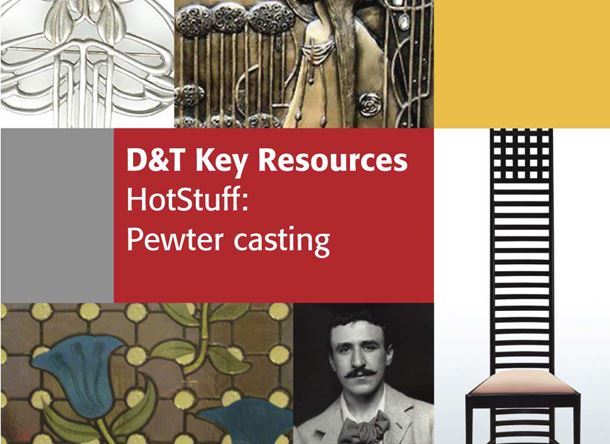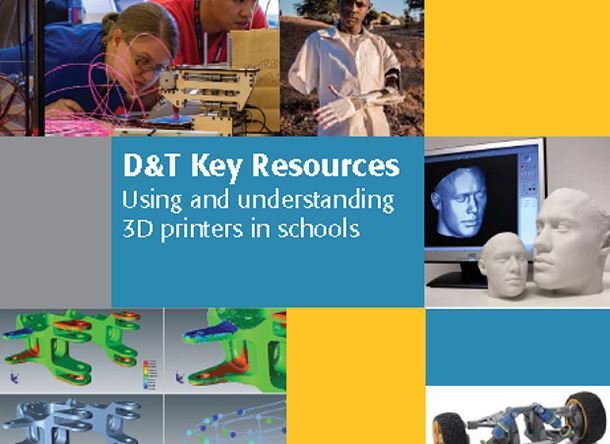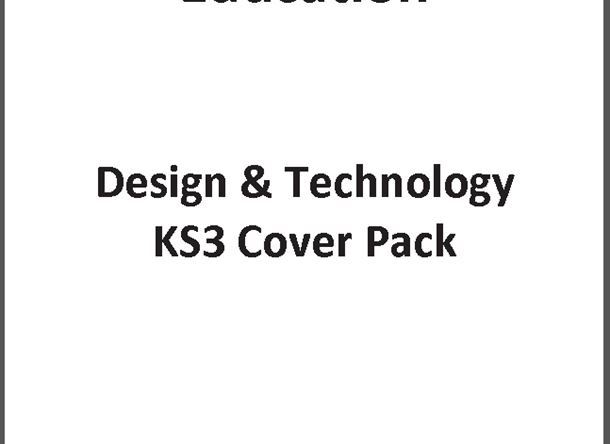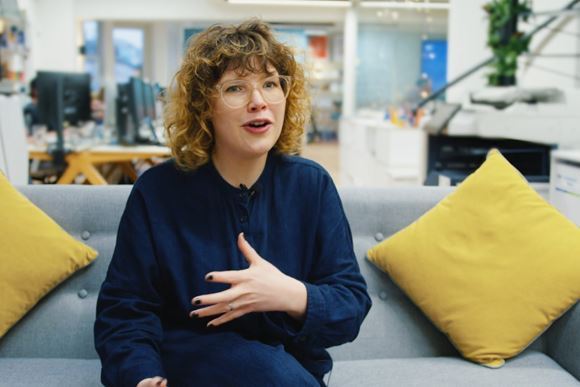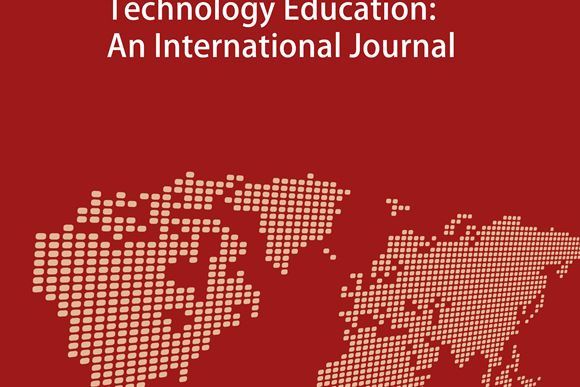Design and Technology Key Resources
New – free to members
This updated set of Key Resources for Product Design and Textiles has been fully refreshed and new titles added. They provide teachers of Years 7, 8 and 9 with a basic set of units they can use and adapt to cover vital areas and address progression and the four learning focuses when teaching D&T:
- Mainly Making
- Mainly Designing
- Design and Make
- Technology in Society.
The original set of Key Resources was developed to help teachers move their schemes of work from craft-based focused projects, where the outcome is the key element, towards planning Design and Technology learning units that focus on students’ learning. As before, these are 'starter' materials for teachers to adapt to their own circumstances, making them more demanding, or simpler, as necessary.
The updated resources each include a 12-point planner with the essential ‘building blocks’ that should be included to achieve good practice in D&T. We encourage teachers to engage with them by highlighting, completing, or adding to the text as appropriate. This is a relatively quick and straightforward process, with lots of helpful ideas to choose from.
They have more and updated materials, including video, suggestions for activities and links to other websites and resources for students to discover more. Extensive notes and slides for teacher use are included in each of the presentations and the appropriate NC coded objectives are laid out to follow.
Earlier resources for Food remain available and are free for D&T Association members to download.
Product Design
Early KS3 Year 7
- In this, students explore the importance of designing an authentic, real-context product for a client to meet their specific needs, and design and make a scaled down shop sign from acrylic, using a laser cutter. The PowerPoint resource includes video instruction on using 2D Design software and information on typography, designing logos, and producing a design specification and using a laser cutter to guide the process.
Mainly Designing – Core Skills
- This introduces developing different sketching and basic CAD skills, including using isometric drawings, and annotating sketches to communicate design ideas. It includes video tutorials covering controlled lines and sketching ergonomic shapes, and links to drawing tools that students might access.
Design and Make – Jewellery Design
- Students are required to design and make an item of jewellery based upon 20th century design movements, reflecting the essential features of the chosen movement. It contains example mood boards, using a viewfinder for inspiration and a video on using 2D Design to help make a pewter mould before outlining the pewter casting method.
Technology in Society – Eco Design
- This helps students to understand what eco design is, how it affects product design, and ways to reduce the effect of design on the environment. It comes with a set of eco-impact cards and has video links to different approaches to reusing and recycling products. There is the option to design and prototype a new product reusing waste items.
Mid KS3 Year 8
- Students learn about manufacturing techniques and safe working procedures in the workshop, how to select materials and manufacturing techniques appropriate to them, how to analyse everyday products and identify their physical properties and how finishing techniques can enhance the material or product.
Mainly Designing – Analyse that
- Students explore and evaluate the work of others through technical analysis of products. They can then design products that are an improvement upon a current product, or design something that takes the best features and combines them. Function and form are both areas for development within this unit.
Design and Make – Table centrepiece
- Student design and make 'anything that is used within the context of a table’, ranging from methods of illumination, condiment and menu holders, vases or bud holders, interactive products such as children's games. While making is optional, the open brief allows students to develop a design specification for a particular user and context. Includes scenario and function cards and video designing guides.
Technology in Society – Cost of Technology
- This examines the true cost of technologies, including raw materials, distribution, processing, finishing and packaging and their impact upon the environment. It also includes the positive benefits of different technologies and how the circular economy helps designers balance the impacts.
Late KS3 Year 9
Mainly Making – Does It Connect?
- How to select appropriate manufacturing tools and equipment, the importance of accuracy and teamwork and how templates and jigs can be used to aid manufacturing. The unit includes manufacturing cards, templates and parts for batch production making and links to video.
Mainly Designing – Advanced Modelling
- This compares CAD modelling with making physical models and the relative advantages of each. It includes videos covering 3D printing, modelling examples and techniques and looks at how software can help design decisions.
- This presentation is about organising ideas to help determine what to design and for whom. It looks at product analysis, sketching and modelling prototypes and using CAD to develop a design solution.
Technology in Society – Evolution and the future
- Students learn how to evaluate products and how and why they have changed over time, developing an understanding about the relationship between evolution and design. It also looks at biomimicry and how it is affecting design. Includes video links and challenging questions for students.
Textiles
Early KS3 Year 7
Mainly Making – Understanding Fibres and Fabrics
- This unit covers the origins and features of natural and human-made fibres, methods of fabric construction including adding colour and surface decoration. Students will learn to safely operate a sewing machine to produce different stitch patterns and know at least one company who use exclusive textile prints.
Mainly Designing – Learning to Look
- Students learn to distinguish different types of drawings required throughout the design process, including annotation. It covers the role of biomimicry in solving design problems and applying this through the use of CAD to scale images, create a repeat pattern, add colour/texture, make colourways and look at methods appropriate for creating a printed fabric.
Technology in Society – Wider Use in Today's Society
- This unit is concerned with understanding the range and applications of textiles, including technical textiles. It aims to stretch students’ understanding o textiles applications and the products that result. Designing and making for users may be an appropriate additional task once full understanding is gained.
Mid KS3 Year 8
Mainly Designing – Solar solutions
- This focuses on designing for the needs of the user in different cultural contexts, combining traditional and new technologies. It includes 2D drawing and 3D modelling using printed solar panels and available resources with examples modifying pattern pieces to improve the product for end user.
Design and Make – Textile Entrepreneurs
- This looks at a range of textiles manufacturing techniques considering different properties of materials. It covers design briefs, context and design strategies, use of tools and equipment, the cost incurred in producing a product and final testing.
Textiles Late KS3 Year 9
Mainly Designing – Para-triathlete Design Challenge
- Using the example of a para-triathlete, students are encouraged to produce relevant research and a design specification, adapting current wetsuit designs. The unit looks at different materials and encourages working in teams to present solutions.
Design and Make – Festival Headgear
- Progressing from earlier units this covers design specifications and generating and adapting design ideas to changing circumstances. It covers evaluation and testing as well as considering the role of the circular economy in developing a final product.
Technology in Society – Wearable Tech
- Students should be able to evaluate existing wearable technology products and generate a number of ideas that include the use of technical fibres and fabrics to enhance the experience of the wearer.
Systems and Control
Early KS3 Year 7
Introduction to electronics systems - Moody Lights
- This unit covers electrical components, their symbols and designing and drawing simple circuit diagrams. It explores breadboards and Veroboards and includes instructional videos on soldering and designing for a product.
Mainly Designing – Scrappy Circuits
- Scrappy Circuits are components made from everyday office clips, card and wires to illustrate and help students understand how circuits are created and the components are connected. It covers inputs, process and outputs, resistors, and has instructional videos on making and linking component blocks.
Technology in Society - Mobile Phone
- A look at how this product has developed over time, what changes there have been to their form and function and the developments have taken place in electronics that have driven the development of the mobile phone. Issues around the positive and negative impact that products can have in the wider world.
Mid KS3 Year 8
Design and Make - Controlled display PoS
- This takes students through the process of designing and making an animated Point of Sale display, investigating how control systems can be applied to develop an eye catching and appropriate display unit.
Design and Make - Scent emitting device - Aroma Fan
- Students analyse existing products to understand how they function and that products can incorporate elements of control. They will investigate and experiment with timing circuits and consider factors influencing designs. Using sketching, 3D modelling and electronics or control systems they construct or model a product using suitable materials, electronic components and techniques. Teachers can adapt this as a Mainly Making activity using the supplied files and support materials.
Mainly Designing – Moving on with the micro:Bit
- This unit covers programming the micro:bit to show off its features using LED lights in different configurations, making music, a step counter and other coding. It contains several instructional videos as well as background information to the micro:bit controller..
Technology in Society - Music Players
- This unit looks at the history of music players from analogue: the phonograph, record players; through digital with tape players, CDs and streaming. It covers the science and technologies behind the different systems and how developments in electronics has driven change.
Late KS3 Year 9
Mainly Designing – Mech-Olympics
- In this, students use their knowledge of electronics to design and build a robot from a number of options that can compete in Olympic events that challenge their skills in programming for control, speed, direction, balance and strength. Includes event sheets and Soccer Bot build instructions.
Design and Make - Regulating greenhouse temperature
- This takes students through prototyping a circuit using a breadboard and understanding how different inputs respond to their environment, They then go on to developing a greenhouse temperature regulator using electrical components.
Technology in Society - Knight Rider - Computerised vehicles
- Developments in electronics have contributed significantly to the development of the computerised car, leading to safer systems but also to self-driving and autonomous vehicles that are dependent upon these systems and have implications for the future of travel.
All these units are being offered free to members of the Association – go to the resource shop pages and remember to log in to get members’ prices.
“The Key Resources have really engaged our students because not only are the PowerPoints and the teacher resources there for us to use, we've been able to adapt them to meet our students' needs and requirements when then has allowed us to really provide an enriched curriculum.”
The resources are designed to enable you to plan your own teaching by selecting units and use these with your own materials or other resources from those available on the Design and Technology Association website. A free guide and associated planning tools 'KS3 D&T Learning Planner and Assessing Without Levels – Teacher Guide' is also available to help you plan effective learning in KS3 Design and Technology.
Join Now
Design and Technology (D&T) is the inspiring, rigorous and practical subject which prepares all young people to live and work in the designed and made world.
We are focused on giving you the tools, knowledge and information you need to become more effective, more experienced and more efficient. Giving you access to expert opinions. And creating a place where you can air your views, ask your questions and so help make a difference to your life and those of your pupils. We want to hear from you. We want to know how we can help. And we want you to join us.

